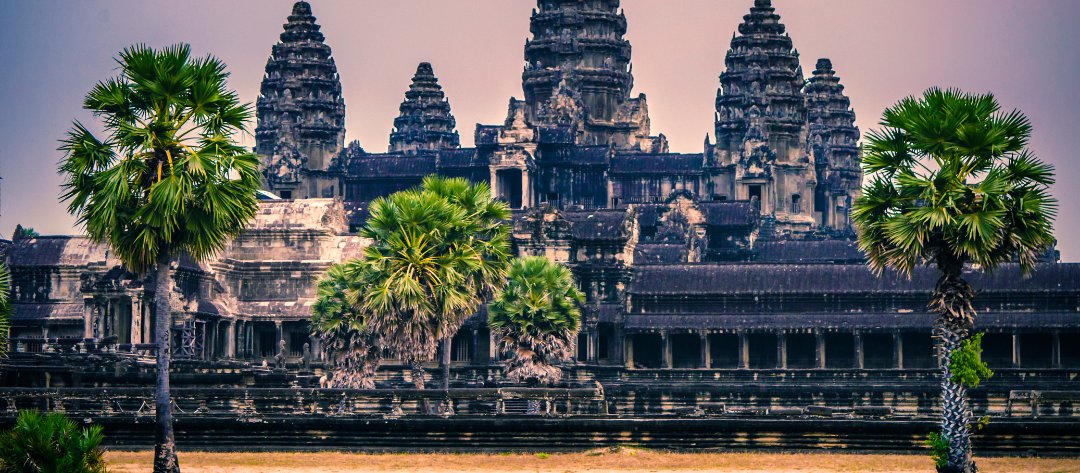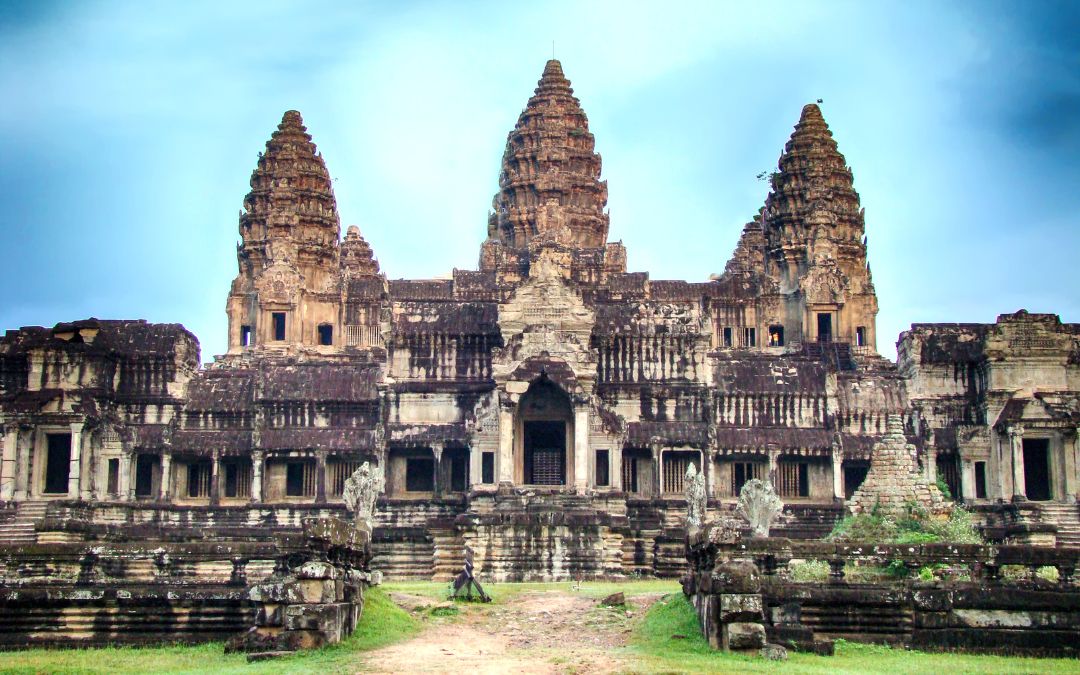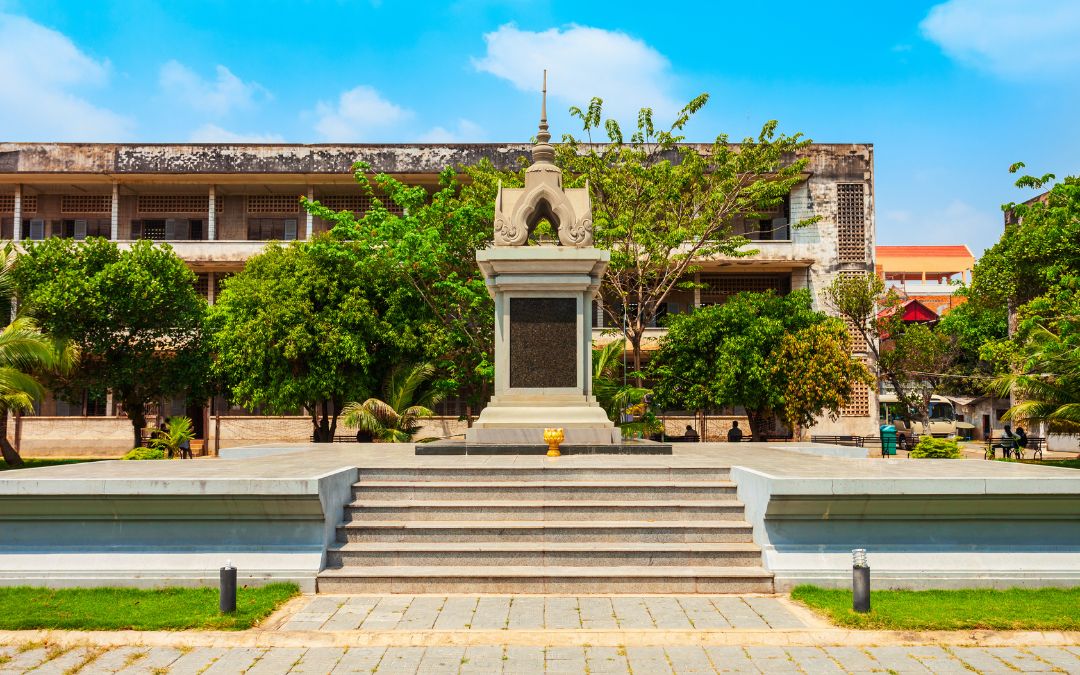Cambodia Historical Places: A Glimpse Into The Country’s Past

Welcome to the enchanting land of Cambodia, where history comes alive amidst breathtaking landscapes and ancient ruins. This country is a treasure trove of historical wonders that will transport you back in time. In this blog post, we invite you to embark on a journey of discovery as we explore some of the most captivating Cambodia historical places. Get ready to be inspired and amazed!
Overview of Cambodian History
Cambodia’s history is a rich tapestry of ancient empires, including the magnificent Khmer Empire. From the 9th to the 15th centuries, the Khmer Empire flourished. Despite facing challenges and foreign occupation, Cambodia regained independence in 1953. Tragically, the country endured the Khmer Rouge regime and its devastating consequences in the late 1970s.
Today, Cambodia has embraced democracy, experienced economic growth, and preserved its cultural heritage. Exploring Cambodia’s historical sites offers glimpses into its glorious past and the resilience of its people.
Top Cambodia Historical Places That Are Completely Worth A Visit
Angkor Wat: A Timeless Masterpiece

No visit to Cambodia is complete without experiencing the awe-inspiring grandeur of Angkor Wat. This UNESCO World Heritage Site is the largest religious monument in the world and a true testament to the Khmer Empire’s architectural brilliance.
Built-in the 12th century by Suryavarman II as a Hindu temple, Angkor Wat later switched to a Buddhist monument. It has been found that Angkor is a “hydraulic city,” thanks to its complicated water control network and elaborate infrastructure connecting the temples. The temple and surrounding city served as the capital of the empire, as well as a sacred place of worship.
In recent years, Angkor Wat has been Cambodia’s main tourist draw, taking in hundreds of ancient temples and religious monuments. As you wander through the intricate stone carvings and towering spires, you’ll feel a sense of wonder and reverence.
- When to visit: To make the most of your visit, we recommend catching the sunrise or sunset over the temple complex. The soft golden hues cast a magical glow on the ancient ruins, creating a truly ethereal experience.
- Tip: Hire a knowledgeable guide who can unveil the hidden stories and legends associated with Angkor Wat, enriching your understanding of its historical significance.
Preah Vihear: A Mountain Sanctuary

It will be a big surprise for Cambodian travelers that Preah Vihear town hides a temple that is even older than Angkor—100 years! Located in a rural region on the edge of the Dângrêk Mountains, this super-mystery temple was built between the 9th and 12th centuries by several kings.
Prasat Preah Vihear (temple of the sacred mountain) is like a lonely warrior standing with time in the jungle, with unique architecture and irresistible charm that can stir the curiosity of any passing visitor.
As ascending the steps to the main sanctuary, every traveler will be rewarded with stunning vistas that stretch for miles, evoking a sense of tranquility and serenity.
- When to visit: To make your visit even more memorable, plan your trip during the early morning when the mist gently embraces the mountaintop.
- Tip: Wear comfortable shoes and be prepared for a steep climb to reach the main sanctuary of Preah Vihear. The effort is truly worth it!
Banteay Srei: A Jewel of Pink Sandstone

Prepare to be mesmerized by the exquisite beauty of Banteay Srei, a temple adorned with intricate carvings and built entirely from pink sandstone.
Known as the “Citadel of Women,” this 10th-century gem is renowned for its delicate and well-preserved artwork. Take your time to admire the intricate details and the stories they tell, as Banteay Srei showcases the pinnacle of Khmer artistry.
- When to visit: To fully appreciate the temple’s intricate beauty, visit during the late afternoon when the warm sunlight bathes the sandstone in a golden glow.
- Tip: Bring a camera or sketchbook to capture the exquisite details of Banteay Srei, as every nook and cranny holds a piece of artistic marvel.
Bayon Temple: Faces of Mystery

Venture into the heart of Angkor Thom, the last capital of the Khmer Empire, and discover the enigmatic Bayon Temple. This extraordinary temple is famous for its multitude of serene stone faces, each exuding a serene and mysterious charm.
While exploring the labyrinthine corridors and ascending towers, you’ll be captivated by intricate bas-reliefs depicting ancient battles, religious ceremonies, and everyday life.
- When to visit: For an unforgettable experience, visit Bayon Temple during the early morning hours when the crowds are thinner, allowing you to immerse yourself in its mystical ambiance.
- Tip: Climb to the uppermost level of Bayon Temple for panoramic views of the surrounding jungle and other majestic structures within the Angkor complex.
Phnom Kulen: Sacred Mountain Retreat

Rather than a hill range, Phnom Kulen is an isolated chain of small mountain plateaux of moderate height lying south of the Dângrêk Mountains.
Phnom Kulen is considered one of the most fascinating Cambodia historical places, and its sprawling national park is regarded as the country’s most sacred mountain by the locals. With a rich history, Phnom Kulen is where Jayavarman II declared himself a Devaraja (god-king) in 802 AD.
The mountain is home to several attractions such as waterfalls that are ideal for swimming, a giant reclining Buddha at the peak, remote temples, and The River of a Thousand Lingas. The latter features ancient carvings on the stone riverbed.
- Tip: Pack a picnic and enjoy a leisurely lunch amidst the picturesque surroundings of Phnom Kulen. It’s the perfect opportunity to relax and connect with nature.
Kep: A Coastal Haven with Colonial Charm

As a coastal resort in Cambodia, Kep was once a popular destination for the country’s elite. The town still boasts relics from its Golden Age in the 1950s and 60s. At the request of King Father Sihanouk, the revered architect Vann Molyvann transformed it into a peaceful retreat. During its prime, Kep housed luxurious villas with contemporary designs.
Today, this tranquil seaside town is renowned for its picturesque beaches, quaint fishing villages, and the remnants of French colonial villas. Take a stroll along the palm-fringed promenade and savor the fresh seafood delicacies for which Kep is famous. Don’t miss the opportunity to explore the nearby Rabbit Island, where you can unwind on pristine beaches or snorkel in crystal-clear waters.
- Tip: Indulge in a sunset seafood feast at the famous Kep Crab Market, where you can savor the catch of the day prepared in a variety of mouthwatering styles.
Bokor Mountain: A Hauntingly Beautiful Retreat

Bokor Mountain, located in Kampot, is a fascinating place that gives you a glimpse into Cambodia’s past.
The mountain is situated about 40 km from Kampot and is home to a series of rundown buildings that are reminiscent of the country’s heyday. Among these buildings is a dilapidated church that was used by the colonial French who used to visit Bokor Hill Station, which was once a popular retreat for Cambodia’s elite. At the top of the mountain, you will find the former hotel, which is now a creepy, abandoned structure.
You can explore the hotel and take some Instagram-worthy photos from its terrace, which provides stunning views of the nearby Vietnamese island of Phu Quoc.
- Tip: Bring a jacket or sweater, as the temperature at the mountaintop can be significantly cooler than the surrounding areas.
Tuol Sleng Genocide Museum: A Heart-Wrenching Reminder

Tuol Sleng, previously known as S21 Prison, is not officially a war history museum. However, it emerged during a period of severe violence and social unrest in Cambodia. Many people argue that the rise of the Khmer Rouge in Cambodia was a direct result of the United States’ campaign of carpet bombing the Cambodian countryside during the Vietnam War. Tuol Sleng was discovered by the Vietnamese troops in 1979, and since then, it has remained undisturbed.
The site still contains bloodstains on the walls and torture tools scattered throughout. One of the most moving exhibits is a collection of portraits taken of every prisoner, young and old, as they entered Tuol Sleng. These portraits can be found in several of the rooms.
- Tip: Approach the museum with respect and sensitivity, as the exhibits can be emotionally challenging. Engage with the audio guides or hire a local guide to gain a deeper understanding of the events that unfolded.
> Read More: From Waterfalls To Temples – 9 Exotic Places To Visit in Cambodia
Get Lost In The Cambodia Historical Places With APT
Cambodia’s historical places are a testament to the country’s rich tapestry of cultural heritage. From ancient temples and sacred mountains to haunting reminders of the past, each site offers a unique glimpse into the vibrant history of this extraordinary nation.
Whether you seek awe-inspiring architecture, coastal charm, or a deeper understanding of Cambodia’s past, these historical places will leave an indelible mark on your soul. So, Embark On a Journey of Exploration with committed travel designers from Asia Pioneer Travel, since we can tailor your tour to your interests and requirements. Let us craft the perfect trip for you and let the stories of the past unfold before your eyes.





